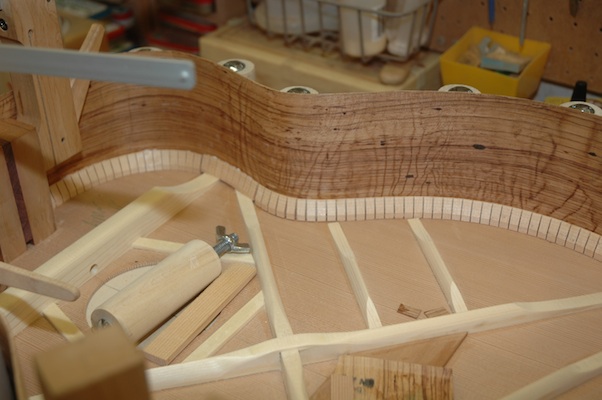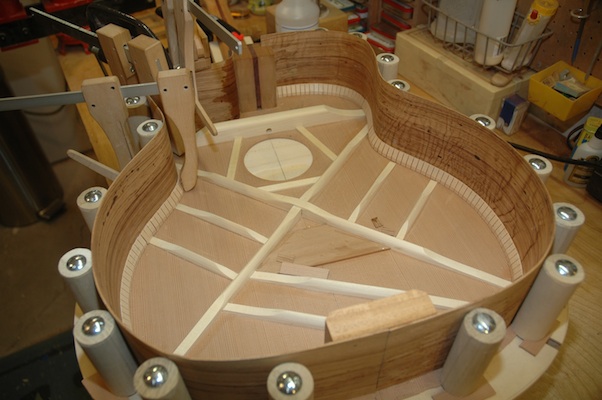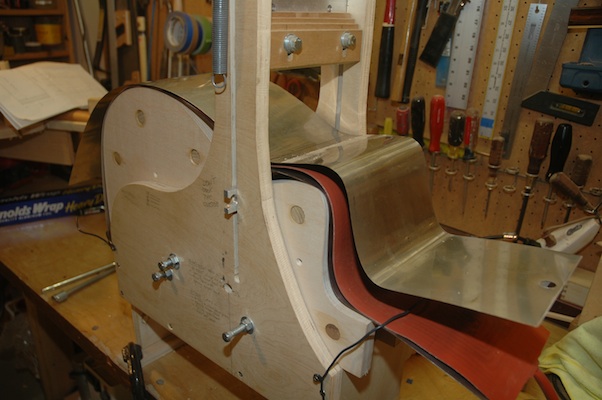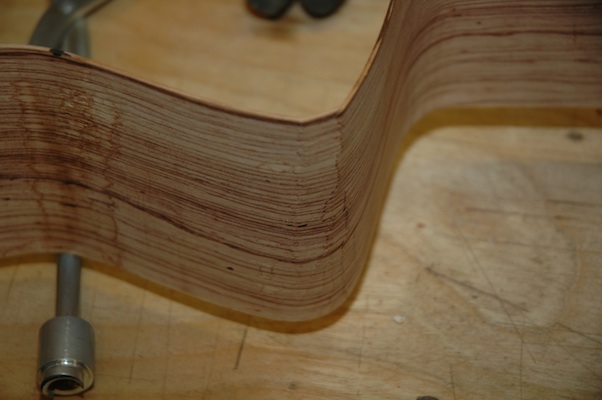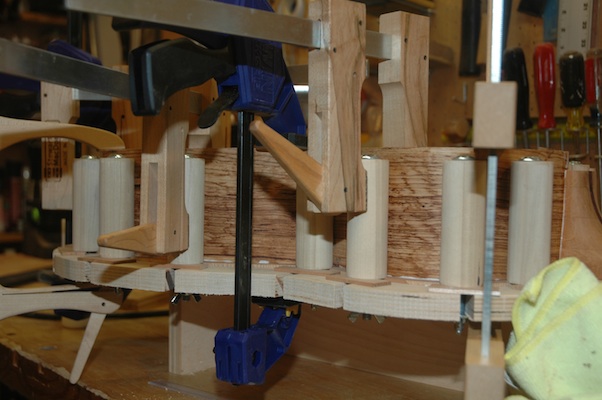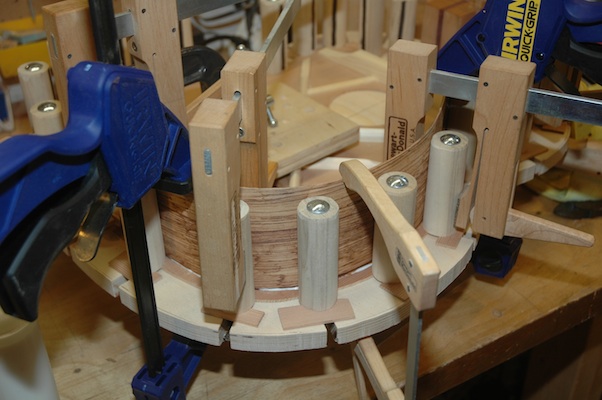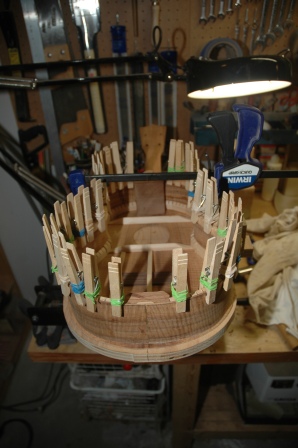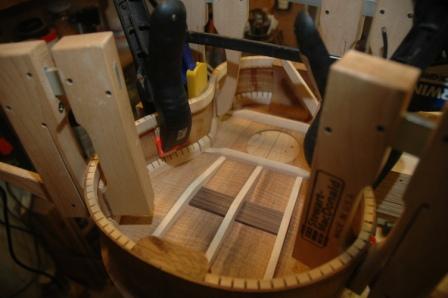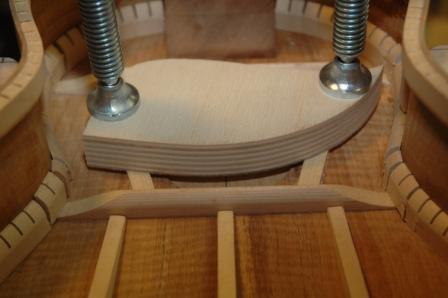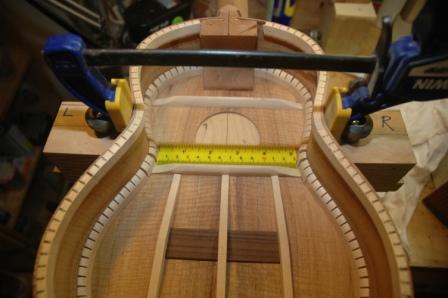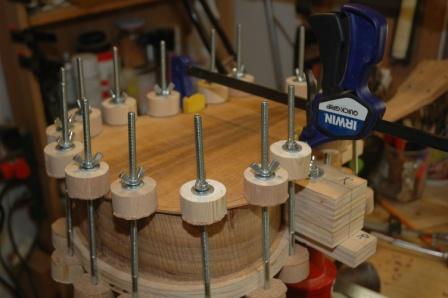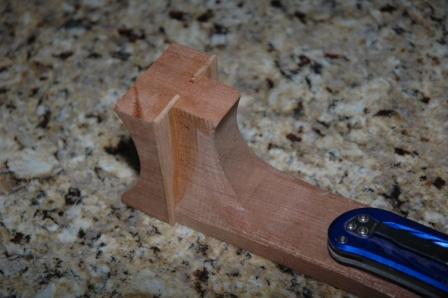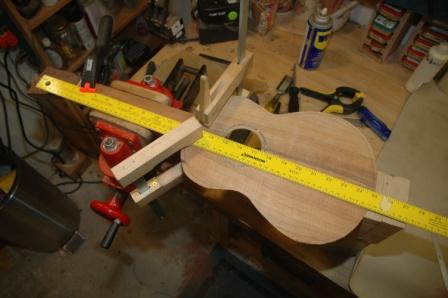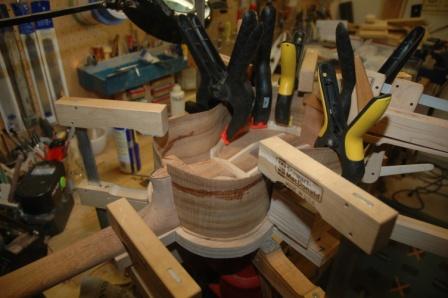Guitar 1002 – Adapt to the Crack, Kerf
February 4, 2012
Well, the repaired crack didn’t survive. What I’ve done is attach the sides to the top and join the cracked section with a piece of engleman spruce backing. After the box is constructed, with both the top and the back attached to the sides, I will trim out the ragged edges, down to the spruce backing, and insert a binding bordered patch. Patch is the wrong word; inlay is better. The binding will match the body binding and the inlay will mimic the end graft, which I believe is rosewood.
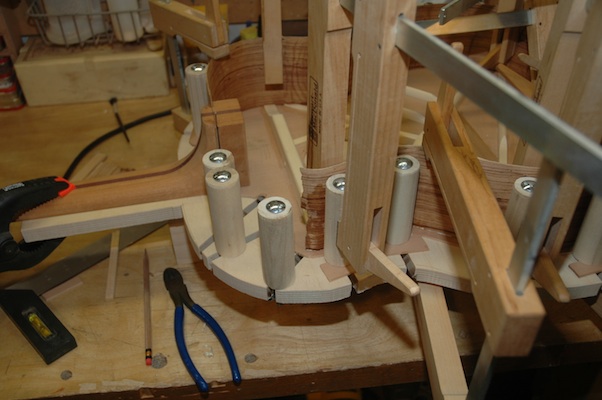
The kerf for the top is installed, and once this dries, along with the spruce backing on the cutaway, I can begin to trim the sides in preparation for installing the back.
